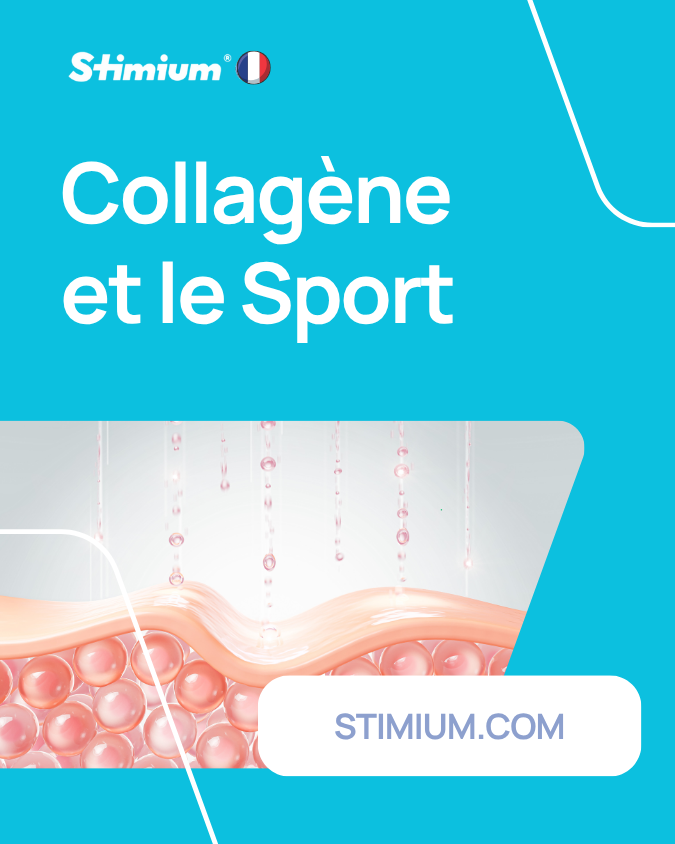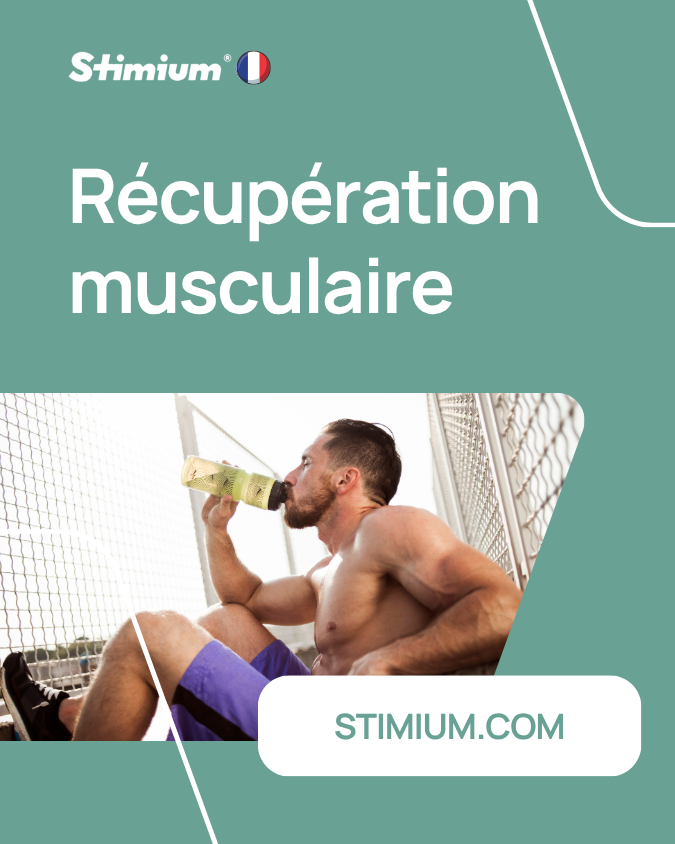Prevention of joint pain: Tips
Joint pain is common and can cause a lot of discomfort. Synovial joints, such as the elbows, wrists, fingers, hips, knees and ankles, are most likely to cause joint pain. This pain can be of different natures, whether mechanical, inflammatory, infectious, traumatic or linked to an autoimmune disease such as rheumatoid arthritis.
There are different treatments to relieve joint pain. They include immobilization of the joint, taking pain-relieving and anti-inflammatory medications, cortisone or hyaluronic acid injections, as well as specific treatments adapted to each disease. However, prevention also plays a key role in managing joint pain. By adopting good habits, it is possible to reduce the risk of joint pain and improve joint health.
Good prevention requires simple but effective measures. It is essential to maintain a healthy weight, as excess weight can put extra pressure on joints and cause pain. Regular exercise is also important for strengthening the muscles that support joints and maintaining flexibility. Adopting good posture and taking regular short breaks from activities that put stress on your joints can also prevent pain. Using heat therapy techniques, such as applying heat or cold, can also help relieve joint pain.
By following these prevention tips, it is possible to reduce joint pain and improve quality of life. Do not hesitate to consult a health professional to obtain personalized advice adapted to your situation.
Strengthen your joints with Stimium Kolaflex and Joint Flex
To strengthen joints, the use of sports nutrition supplements can be beneficial.
Stimium Kolaflex and Joint Flex are products specially designed to support joint health and promote mobility.
1. Kolaflex: The Power of Marine Collagen
Collagen, a major component of our joints, muscles, tendons and skin, represents 30% of the proteins in our body. Kolaflex marine collagen powder offers 11g of collagen per serving, without fat or sugar, suitable for active and health-conscious people. Its unique formula combines vitamin C for the normal formation of collagen, magnesium citrate for the reduction of fatigue and normal muscle function, and marine collagen from French fishing, in a sustainable development approach. Directions for use include a daily dose of 11g, preferably taken at breakfast or after training, mixed with water, smoothies, yogurts, or other recipes without intense heat. Kolaflex promotes joint flexibility, skin elasticity and muscle vitality, offering high assimilation and digestibility for optimal well-being.
2. Flex Joint: For Optimal Joint Comfort
Stimium Joint Flex is a food supplement designed to improve the joint comfort of athletes. Its unique formula contains a synergistic combination of components such as glucosamine sulfate, chondroitin sulfate, L-methionine, vitamin C, ginger, turmeric, hyaluronic acid, manganese and marine collagen hydrolyzate . These ingredients work together to reduce inflammation, improve joint mobility and flexibility, and protect against oxidative stress. Stimium Joint Flex helps prevent joint pain related to sports activity while promoting cartilage regeneration. It is recommended to take one capsule per day to maintain healthy and functional joints. Stimium Joint Flex is manufactured to the highest quality standards and complies with current anti-doping regulations.
These two products offer complete solutions for taking care of joints, muscles and tendons, essential for regular sports practice and good general health.
What is a joint?
A joint is the point of contact between two bones and allows movement. There are different types of joints, including synovial joints, which are most likely to cause pain. Synovial joints are made up of two bony ends, held together by tendons, and covered with hyaline cartilage which protects them. The joint capsule surrounds the area of friction and produces synovium, a viscous substance that makes movements more flexible and helps nourish the cartilage.
To visualize the anatomy of a synovial joint, look at the image below:
The main joints responsible for pain
Certain joints, such as the elbows, wrists, fingers, hips, knees, and ankles, are more likely to cause joint pain than others. These joints are subjected to significant loads and can be weakened by trauma or age. It is therefore important to take care of these joints and prevent them from pain.
To avoid joint pain in the elbows, wrists, fingers, hips, knees and ankles, it is recommended to:
- Practice muscle strengthening exercises to support and protect these joints.
- Adopt a gradual approach in physical activities to avoid trauma.
- Use warm-up techniques before exercise to prepare joints.
- Avoid repetitive movements or uncomfortable positions that could put excessive strain on these joints.
- Eat a balanced diet to maintain a healthy weight and reduce pressure on joints.
- Take regular breaks during prolonged activities to rest your joints.
By following these tips, it is possible to minimize joint pain in your elbows, wrists, fingers, hips, knees and ankles, and preserve their long-term health.
Types of joint pain and their causes
Joint pain can present in different types, each with its own causes. Understanding these types of pain can help prevent their occurrence and promote optimal joint health. Here are the main types of joint pain:
Mechanical pain
Mechanical pain is often caused by osteoarthritis, a degenerative disease that affects the cartilage in joints. Osteoarthritis is characterized by progressive wear and tear of the cartilage, which leads to limited joint mobility and pain.
Inflammatory pain
Inflammatory pain is commonly associated with conditions such as tendinitis, arthritis, and tendon inflammations. These conditions cause joint inflammation and severe pain.
Traumatic pain
Traumatic pain occurs after a direct impact on a joint, such as a fall or an accident. These traumas can cause joint damage, fractures or sprains, leading to pain and reduced joint function.
Drop
Gout is a specific form of joint pain caused by deposits of sodium urate crystals in the joints. Gout attacks cause intense pain, usually in the big toe, and can be triggered by a diet high in purines.
Prevention of joint pain: Practical advice
To prevent joint pain, it is essential to adopt certain habits and preventive measures. Here are some practical tips:
Maintain a healthy weight:
Being overweight can put extra pressure on joints, making them more likely to develop pain. Maintain a healthy weight by eating a balanced diet and avoiding excess.
Exercise regularly:
Regular exercise helps strengthen the muscles surrounding the joints, providing additional support and reducing stress on the joints. Opt for physical activities adapted to your abilities and preferences.
Drink green tea:
Green tea is known for its antioxidant and anti-inflammatory properties, which may help maintain joint health. Integrate green tea into your daily diet to benefit from its benefits.
Avoid bad postures:
Adopt good posture to relieve pressure on your joints. Avoid standing in an uncomfortable position for long periods of time and be sure to maintain correct posture in your workplace and at home.
Take regular breaks:
When performing tasks that put strain on your joints, take regular breaks to allow your body to rest and recover. This can help reduce fatigue and minimize the risk of joint pain.
Carry heavy loads correctly:
When you need to lift heavy weights, make sure you do so using the correct techniques to avoid overloading your joints. Bend your knees and keep your back straight to distribute the load evenly.
Stretching and warming up:
Before starting any strenuous physical activity, take the time to warm up and stretch your muscles and joints. This can help prepare your body for exercise and reduce the risk of joint injuries.
Choose suitable and comfortable shoes:
Opt for shoes that provide good support and adequate cushioning for your feet and joints. Poorly fitting shoes can put additional stress on your joints and increase the risk of pain.
By following these practical tips, you can help prevent joint pain and maintain the health of your joints. Remember to consult a healthcare professional for personalized advice tailored to your situation.
Joint Pain Prevention: Additional Tips
To prevent joint pain, it is essential to adopt healthy lifestyle habits and follow additional advice. Here are some important recommendations:
- Move regularly: Inactivity can contribute to joint pain. It is therefore essential to stay active by practicing regular physical activities. Opt for exercises that stress your joints without traumatizing them, such as swimming or cycling.
- Lose weight: Excess weight puts extra pressure on joints, which can make pain worse. If you are overweight, try to lose a few pounds gradually and maintain a healthy weight to take the strain off your joints.
- Stretch: Regular stretching helps maintain joint flexibility and reduces the risk of pain. Incorporate stretching exercises into your daily routine, paying special attention to joints prone to pain.
- Strengthen your muscles: Proper muscle strengthening helps stabilize joints and prevent pain. Do strengthening exercises targeting the muscles around your joints, making sure to maintain good technique and avoid traumatic movements.
- Maintain optimal range of motion: Regularly perform exercises that promote good range of motion in your joints. This can include flexibility exercises and movements that work all the axes of your joints.
- Adopt good posture: Poor posture can increase stress on your joints and contribute to pain. Become aware of your posture and make necessary adjustments to maintain an optimal position when sitting, standing or moving.
- Use heat therapy: Applying heat or cold can help relieve joint pain. Use hot or cold compresses according to your needs and the recommendations of your healthcare professional.
- Eat a healthy, balanced diet: A diet rich in essential nutrients can help maintain the health of your joints. Eat foods rich in antioxidants, omega-3, and vitamins and minerals to support your joints.
By following these additional tips, you can prevent joint pain and promote better joint health.
Conclusion
Prevention of joint pain is essential to improve the quality of daily life. By adopting a healthy lifestyle, following appropriate treatments and putting into practice practical and additional advice, it is possible to reduce joint pain and improve your general health.
It is important to consult a health professional to establish a personalized prevention plan adapted to each individual. Taking care of your joints is essential for optimal well-being.
By maintaining a healthy weight, regularly practicing appropriate physical activity and adopting good posture, we can prevent joint pain. Additionally, it is recommended to take regular breaks, carry heavy loads correctly, do stretching, and use heat therapy techniques to relieve pain.
Preventing joint pain also involves healthy lifestyle habits, such as maintaining a balanced diet and avoiding a sedentary lifestyle. By combining these preventive measures with appropriate treatments, everyone can improve their joint comfort and promote a better quality of life.
FAQs
What is a joint?
A joint is the point of contact between two bones and allows movement. There are different types of joints, including synovial joints, which are most likely to cause pain. Synovial joints are made up of two bony ends, held together by tendons, and covered with hyaline cartilage which protects them. The joint capsule surrounds the area of friction and produces synovium, a viscous substance that makes movements more flexible and helps nourish the cartilage.
What are the main joints responsible for pain?
The main joints responsible for pain are the elbows, wrists, fingers, hips, knees and ankles. These joints are subjected to significant loads and can be weakened by trauma or age.
What are the types of joint pain and their causes?
Types of joint pain can be mechanical, inflammatory, traumatic, infectious or related to an autoimmune disease. Mechanical pain is often caused by osteoarthritis, inflammatory pain is generally due to tendinitis, infectious arthritis or inflammation of the tendons, traumatic pain occurs after an impact on a joint, gout is characterized by crystal deposits sodium urate, and rheumatoid arthritis is an autoimmune disease that causes severe pain.
What are some practical tips for preventing joint pain?
Practical tips for preventing joint pain include maintaining a healthy weight, exercising regularly to strengthen the muscles around the joints, drinking antioxidant-rich green tea, avoiding poor posture, taking regular breaks, carrying heavy loads correctly, stretching and warming up before exercise, and choosing suitable and comfortable shoes.
What are some additional tips for preventing joint pain?
Additional tips to prevent joint pain are to move regularly, lose weight if overweight, practice exercises that are not traumatic for the joints, strengthen the muscles surrounding the joints, maintain optimal range of motion, adopt good posture, use heat therapy to relieve pain, and maintain a healthy and balanced diet.







